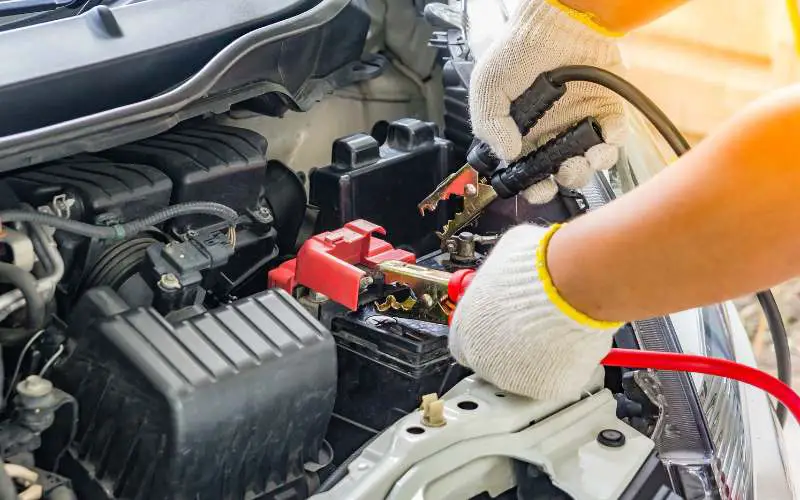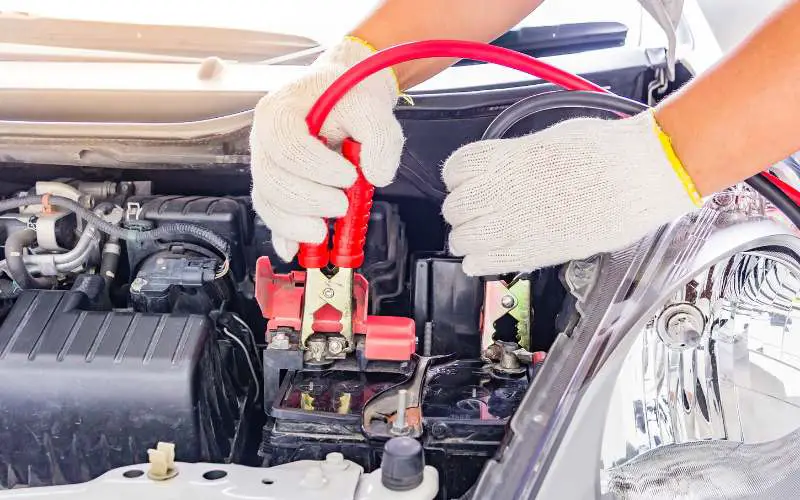Knowing how to jumpstart a car is not just a valuable skill; it’s an automotive lifeline. Dead car batteries can strike when you least expect it, and a quick, effective jumpstart can save the day. This tutorial equips you with the know-how to handle common battery issues confidently.
By understanding the common causes of dead batteries and taking necessary safety precautions, you’ll not only rescue your vehicle but also boost your confidence as a driver. In this guide, we’ll walk you through the steps of a jumpstart, ensuring you’re well-prepared for any unexpected roadside situation.

Understanding the Basics
A jumpstart, in its essence, is a practical method to revive a vehicle with a dead battery by drawing power from another functioning car. It’s a skill that can save the day when your car refuses to start due to a drained battery.
Understanding the primary reasons for a dead car battery is crucial. Common culprits include leaving your lights on, extreme weather conditions, or an aging battery. Recognizing these factors can help you take preventive measures to avoid future battery failures.
Equally important is identifying the tools and equipment necessary for a successful jumpstart. The primary tool you’ll need is a set of jumper cables. These sturdy cables with clamps at each end play a pivotal role in transferring the energy from the donor vehicle to your dead battery, jumpstarting your car and getting you back on the road.
With these fundamentals at your fingertips, you’ll be well-equipped to tackle the unexpected challenge of a dead battery with confidence.
Safety Precautions Before Attempting a Jumpstart
Safety should always be the top priority when jumpstarting a car. Before attempting a jumpstart, take time to understand and implement essential safety precautions.
This includes making sure both vehicles are in a safe location, turning off ignitions, and wearing safety gear like gloves and safety glasses to guard against potential sparks. Preventing electrical shocks is crucial; always handle jumper cables with care, ensuring the clamps don’t touch each other or any metal surfaces.
By maintaining a safe and controlled environment and adhering to these safety guidelines, you can ensure a trouble-free jumpstart, protecting your vehicle from any potential hazards.
Connecting the Jumper Cables
Step 1: Positioning the Vehicles
Before starting the jumpstart process, ensure that both vehicles are in a safe location, with their engines turned off. Position them so that they are not in direct contact but are close enough for the jumper cables to reach between their batteries.
Step 2: Locating the Battery Terminals
Identify the battery terminals on both the dead and working vehicles. They are typically labeled as positive (+) and negative (-). Take a moment to familiarize yourself with these terminals before proceeding to avoid any confusion during the connection process.
Step 3: Connecting the Jumper Cables Correctly
a. Attach one end of the red (positive) jumper cable to the positive terminal of the dead battery.
b. Connect the other end of the red (positive) cable to the positive terminal of the working (donor) battery.
c. Attach one end of the black (negative) jumper cable to the negative terminal of the working (donor) battery.
d. Finally, connect the other end of the black (negative) cable to an unpainted metal surface on the dead car’s frame, away from the battery. This grounding point helps prevent sparks near the battery.
Step 4: Avoiding Common Mistakes
Ensure that the cable clamps are securely attached to the battery terminals and are not loose. Make certain that the jumper cables do not touch each other during the connection process to prevent sparks. Double-check that you have followed the correct sequence of connections to minimize the risk of electrical issues.
How to Jumpstart a Car Step by Step
Jumpstarting a car involves a sequence of steps to safely transfer power from a functioning vehicle to one with a dead battery.

Step 1: Starting the Functioning Vehicle
First, start the functioning vehicle’s engine. This car will serve as the donor vehicle, supplying power to jumpstart the dead battery. Allow it to run for a few minutes, which helps charge the dead battery and ensures a steady power supply for the jumpstart.
Step 2: Waiting and Revving the Engine
After starting the donor vehicle, wait for a few minutes. If the dead battery is severely depleted, it may need more time to charge. Once some time has passed, you can gently rev the engine of the functioning vehicle. This can provide an extra surge of power to aid the jumpstart process.
Step 3: Starting the Dead Vehicle
Now, attempt to start the dead vehicle. If the jumpstart is successful, the engine should turn over. If the engine doesn’t start after a few tries, it’s crucial not to force it. Instead, you may need to seek professional assistance or assess the battery’s condition.
Step 4: Safely Disconnecting the Cables
Once the dead vehicle is running, it’s time to disconnect the jumper cables in the reverse order of how they were connected. Start by removing the black (negative) cable from the previously grounded point on the dead car’s frame.
Then, detach the black cable from the donor vehicle’s negative terminal, followed by the red cable from both vehicles. This order minimizes the risk of electrical issues. Once the cables are safely removed, you’ve successfully completed the jumpstart.
What If It Doesn’t Work?
In the event that your jumpstart attempt doesn’t succeed, there are some essential troubleshooting tips to consider. First, ensure that the jumper cables are securely connected to the battery terminals and that there are no loose or corroded connections.
If the dead battery is too worn out or damaged, a jumpstart may not be effective, and it could be time for a battery replacement. If the engine doesn’t respond after several attempts, it’s important not to force it, as this can lead to further damage.
At this point, it’s wise to consider seeking professional help, as they can diagnose the issue more accurately and provide the necessary repairs or a battery replacement if needed. Remember that your safety and the well-being of your vehicle are top priorities, and professional assistance can ensure both are maintained.
After a Successful Jumpstart
After a successful jumpstart, it’s crucial to recognize the importance of driving your vehicle for a sufficient duration to recharge the battery fully. This drive allows the alternator to replenish the energy used during the jumpstart and ensures that your battery is in good shape for the next journey.
To prevent future dead batteries, consider checking and addressing the common culprits, such as leaving lights or electronics on when the engine is off. Battery maintenance is key to longevity, so periodically inspect the battery’s condition and connections.
Keep the terminals clean and free of corrosion, and consider investing in a battery tender if your vehicle is not in regular use. By taking these preventive measures and maintaining your battery, you can avoid future surprises and ensure your car starts reliably every time.
Sum It Up
knowing how to jumpstart a car is a valuable skill that can rescue you from unexpected dead battery situations. Safety, systematic connections, and troubleshooting are key.
After a successful jumpstart, driving to recharge the battery is crucial, and preventive measures can help avoid future dead batteries. Regular maintenance and cautious habits keep your vehicle reliable and ensure you’re a more prepared and confident driver.
